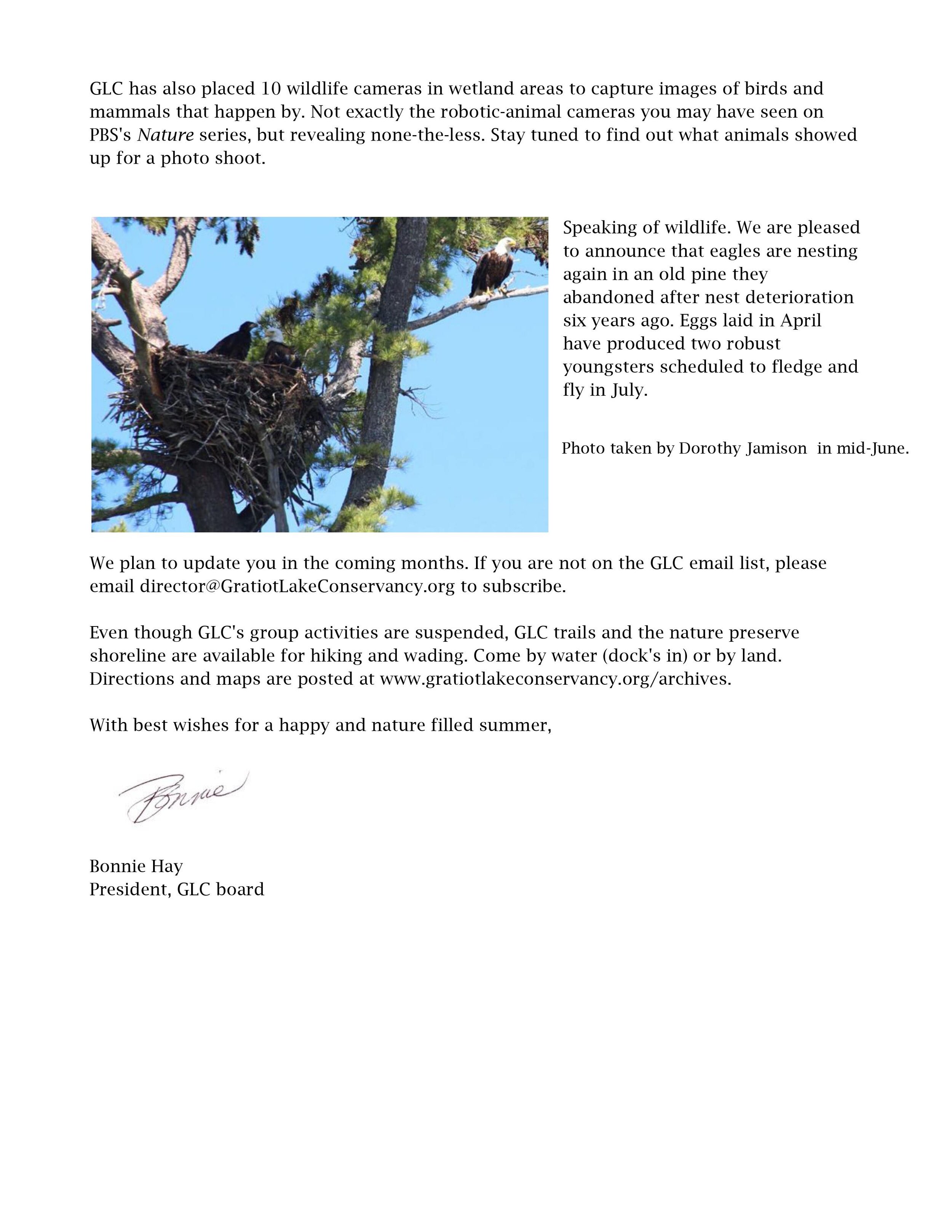John Yunger of Governors State University summarizes mammal presence at GLC.
Read moreKeweenaw Community Forest Company Wildlife Cameras
As part of Keweenaw Community Forest Company’s land management and documentation at GLC, Mark Salo installed ten wildlife cameras. The cameras have been triggered by a number of furry or feathered residents.
Red Fox at a frozen beaver dam. Photo courtesy KCFC.
Black bear wandering through the woods. Photo courtesy KCFC.
According to John Yunger’s 2020 mammal report, black bears are one of the most common carnivores at GLC and regularly appear on remote cameras. Photo courtesy KCFC.
A few hours before the red fox (above) wandered over the frozen beaver dam, a wolf crossed paths with the camera. Photo courtesy KCFC.
This Winter's Finch Forecast
Are your bird feeders out? Northern residents may be delighted to see beloved winter visitors at their feeders this year. According to the Finch Research Network, cone crop conditions in from Lake Superior eastward indicate that winter 2020-2021 will be a considerable flight year for a handful of winter irruptives. Tyler Hoar of the Finch Research Network predicts that northern birders can expect to enjoy flights of Purple Finches, Evening Grosbeaks, Common and Hoary Redpolls, Pine Siskins, and Red-breasted Nuthatches this year. Red Crossbills may make an appearance later this winter as the white pine cone crop to the north is depleted, and White-winged Crossbills in the east may head south due to poor spruce cone crops. Pine Grosbeaks and Bohemian Waxwings are not expected to journey south this year in large numbers.
While some of these species are considered year-round residents of the Keweenaw peninsula, birders may notice them in larger numbers during the winter as northern populations fly south in search of food. Already, we have noticed an increase in Evening Grosbeaks at our feeders this winter compared to last year – as many as 30 at a time – a welcome splash of bold yellow. At the time of this writing (mid-November), the Pine Siskins have begun to trickle in and Red-breasted Nuthatches have been increasingly common visitors, but the Purple Finches have come and gone.
Purple Finch Photo courtesy of Jim Hay
For more information about the 2020 winter finch forecast, check out our Fall 2020 newsletter!
Gratiot Lake Conservancy Book Club
We are excited to invite you to the new GLC book club! We will be meeting via Zoom once per quarter to discuss the selected book. Discussions will generally last from 45 minutes to an hour.
Our first book will be Winter World: The Ingenuity of Animal Survival by Bernd Heinrich. Heinrich is a prolific nature writer and professor emeritus of biology at the University of Vermont. His scientific research — usually focused on physiological, ecological, and behavioral adaptations in nature — inspires his writing. In Winter World, Heinrich reflects on the adaptations that animals must employ in order to survive harsh winters. We hope you will cozy up with this book this winter and join us on January 30th, 2021 for a Zoom discussion.
Please email Gina Marie at gmjarviglc@gmail.com to join GLC’s book club. You will receive information — such as Zoom meeting invites — when it is available.
Water's Edge Fall 2020
Water’s Edge: Gratiot Lake Conservancy News Fall 2020 is now available!
Read moreWebinar Available: NotMISpecies from Michigan's Invasive Species Program →
A team from the Michigan DNR, EGLE, and Michigan State University look for red swamp crayfish in burrows. Red swamp crayfish will be featured in the November 17, 2020 webinar, “Delicious but Dangerous.” Photo courtesy of Michigan’s Invasive Species Program and EGLE.
Read moreSummer Update 2020
Donation of 198 Acres at Gratiot Lake
In July, Lizzadro Farms Inc. donated additional land to GLC. The 198 acre parcel is indicated on the map below as the gray area in section 4 at the northern tip of the lake. This new GLC land adjoins “Sandy Beach” (the gray area in section 3 below) which was donated to GLC in 2018.
The wooded parcel includes the mouth of Sucker Creek and approximately 3,500 feet of mostly cobble shoreline. Sucker Creek is a high quality feeder stream to Gratiot Lake. Historically, Sucker Creek is known to anglers and eagles alike as a location for springtime smelt and white sucker runs. These fish swim up freshwater streams to breed.
While much of Gratiot Lake is underlain by Jacobsville sandstone, this forested slope steeply rises from the lake on volcanic basalt bedrock. The Keweenaw Fault runs through it, under the tip of Gratiot Lake, and towards Lac LaBelle. The wooded slope meets the narrow shoreline near the lake’s deepest hole (over 70’ in depth). It is hypothesized that during the last Ice Age a glacier rose as much as two miles above the bedrock here and created the deep “plunge pool” as its melt cascaded and scoured into the basin that is now Gratiot Lake.











